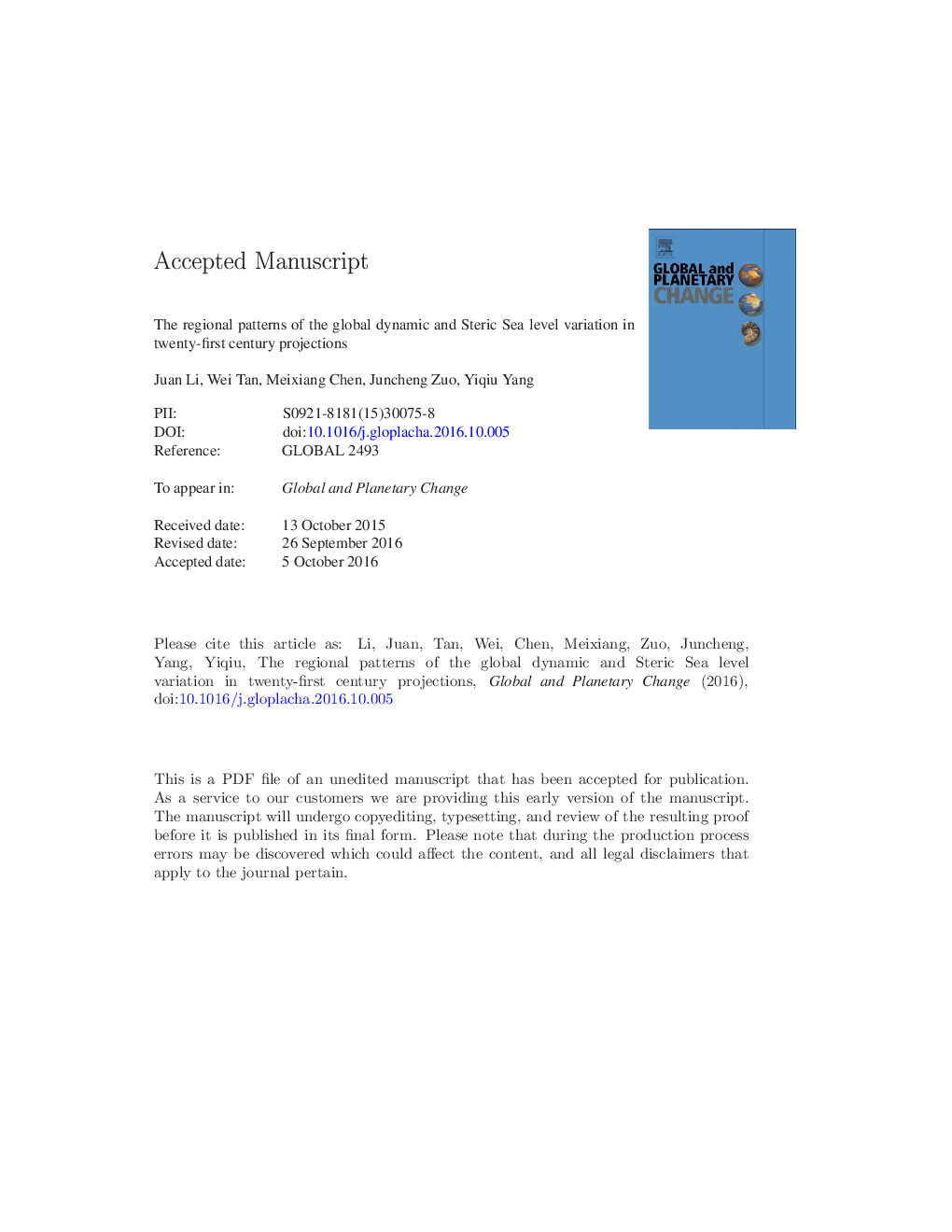| کد مقاله | کد نشریه | سال انتشار | مقاله انگلیسی | نسخه تمام متن |
|---|---|---|---|---|
| 6347880 | 1621636 | 2016 | 37 صفحه PDF | دانلود رایگان |
عنوان انگلیسی مقاله ISI
The regional patterns of the global dynamic and steric sea level variation in twenty-first century projections
ترجمه فارسی عنوان
الگوهای منطقه ای تغییرات سطح پویا و استریک جهانی در پیش بینی های قرن بیست و یکم
دانلود مقاله + سفارش ترجمه
دانلود مقاله ISI انگلیسی
رایگان برای ایرانیان
کلمات کلیدی
موضوعات مرتبط
مهندسی و علوم پایه
علوم زمین و سیارات
فرآیندهای سطح زمین
چکیده انگلیسی
This study discusses the regional sea-level variation associated with possible influence factors using Community Climate System Model version 4 (CCSM4) in the 21st century. Under the moderate emission scenario of the IPCC's Representative Concentration Pathway 4.5 (RCP4.5), the predicted sea-level variation is spatially non-uniform. The most remarkable variation of the dynamic sea level (DSL) is observed in three typical regions (North Pacific, Southern Ocean, and North Atlantic). In the North Pacific, the DSL rises significantly around Kuroshio and Kuroshio extension, while declines in the subpolar gyre. The DSL variation shows an out-of-phase relationship with the Sverdrup transport, indicating that the wind stress induced Sverdrup transport is generally responsible for the DSL variation. In the Southern Ocean, the DSL variation performs a belt-like pattern, it rises around 40°S zonal band, while declines in its southern side, this is related to the enhancement of westerly wind stress. In the North Atlantic, the DSL variation acts as a dipole mode, it rises in the north of the North Atlantic Current (NAC), and declines in the south. This dipole pattern can be also interpreted by the Sverdrup transport except in the northeast of the NAC, where the DSL rise is more affected by the weakening of the Atlantic Meridional Overturning Circulation (AMOC). Compared with the DSL, the steric sea level (SSL) rises in most of the ocean, and the thermosteric sea level (TSL) is the major contributor. Only in the Southern Ocean, the SSL descends. The decreased SSL is affected by the halosteric sea level (HSL), which is mainly attributed to the weakly increased salinity from 300 m to the bottom. To some extent, the HSL also contributes to the SSL rise in the Pacific, this is caused by the seawater freshening and warming in the upper 1500 m. However, in the Atlantic, the HSL declines, thus partly offsets the rising effect of the TSL. These opposite variations are associated with the weakened AMOC.
ناشر
Database: Elsevier - ScienceDirect (ساینس دایرکت)
Journal: Global and Planetary Change - Volume 146, November 2016, Pages 133-139
Journal: Global and Planetary Change - Volume 146, November 2016, Pages 133-139
نویسندگان
Juan Li, Wei Tan, Meixiang Chen, Juncheng Zuo, Yiqiu Yang,
